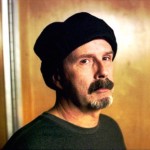Willie Nelson is one of the scant few older country artists with an appreciable heritage who remains commercially viable in 2013, despite little to no radio airplay. Country music today (and especially that which gets played on radio) has been diluted into a gruel of cast-off power ballads and angry, riffy paeans to jingoism, guns, grits and beer, all in copious quantities. Willie’s just not into that kind of song, which is likely the reason that he is not played on said radio, unless he’s tethered to some more modestly talented youngblood’s tailfeathers. But he would not be at home there these days anyway.
It’s OK. His home’s on the road. He’s done his time on radio already, he’s recorded with everyone from Waylon and Ray Price to Tuvan throat-singing cowboys and he still tours like a man half his age. His core audience has remained loyal, and it’s not like Willie’s courting new fans when he releases a new album like Let’s Face the Music and Dance; it’s more about satiating the ones he already has.
Consequently, this new album is hardly an excursion into unknown territory. It is a comfortable redesign of a formula Willie has used for years;, starting with 1978’s Stardust (which actually was something of a groundbreaking statement): find a dozen tunes from America’s golden age of songwriting or from early or pre-rock & roll and lay them down in an easygoing format that makes them all feel and sound similar. No crime in that, certainly, but it also limits one’s expectations.
Let’s Face the Music and Dance starts out strong enough. The title cut is by Irving Berlin; Willie does his Willie thing to it by having his road band as his backup (with the exception of his recently deceased bassist Bee Spears), which is called, naturally enough, the Family. He sings with trademark nasal haste (so much for laid back). His guitar playing does the same thing: lilting runs and jazzy lines from his worn-through Martin N-20, Trigger. Pretty much what you’d imagine some 200-plus albums into his career.
The treasure here is “Is the Better Part Over,” a sullen end-of-relationship Nelson original. “If the better part’s over/Then why should we try anymore?” Free meter surrounds an embedded waltz, and the entire Family underplays mercifully. The song is not new (it ended 1989’s A Horse Called Music) but it’s easily the best moment of this album.
Of the rest, there are no real standouts. Many of the writers represented on Stardust are here, too, but rendered with far less memorable results. There’s another Berlin song and one by Django Reinhardt. The nods to rock & roll don’t rock but nod — like Carl Perkins’ “Matchbox,” which is nearly song-nambulism. It’s full of serviceable solos from both Mickey Raphael on harmonica and Bobbie Nelson on piano, who is family to Willie. Everything sounds pretty much the same all through the album, and it all seems to lack much energy or inspiration.
No one expects a miraculous late-career rejuvenation a la Johnny Cash, but we could hope for something more interesting than this; if you want groundbreaking, you need to go back to Red Headed Stranger (1975), Stardust or Highwayman (1985). It’s just not happening here.
Realistically, Let’s Face the Music and Dance is mostly a great new item at his live shows, where Willie sells a lot of merchandise. There’s no shame in that, any more than there would be in a new t-shirt design or updated beer cozies. It’s a record to listen to on the ride home from the Willie show in the car. Whether it ever gets played through again when it gets home is another matter.







